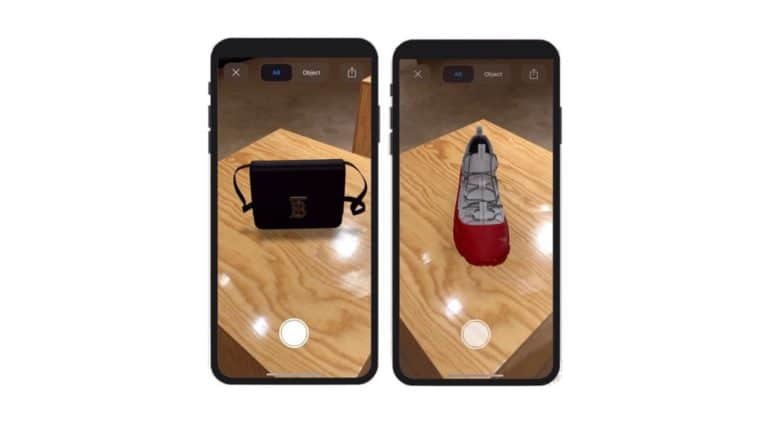
How 5 Retailers Are Using AR for COVID-Compliant Try-Ons
by Stephanie Miles
Augmented reality platforms aren’t exactly new in the retail space, but they’ve taken on greater relevance in the COVID era. With physical stores temporarily closed or open with significant occupancy restrictions, retail brands have gotten creative in how they’re using technology to overcome the newest sales obstacles.
In a high-touch environment, how do you allow guests to try on clothing, jewelry, or makeup without spreading germs? How do you keep customers flowing through stores quickly, when occupancy restrictions limit the number of people who can be inside a business at any given time?
Prior to the pandemic, 79% of shoppers tried on items before buying and 55% said the preference to see, touch, and try on apparel was the “most important” factor when deciding to shop in-store vs. online. Other surveys have shown that physically holding products creates a sense of psychological ownership that drives high-cost purchases.
With hygiene and customer safety now a top priority, more retailers are beginning to use AR to simulate the try-on experience. Whether they’re “trying on” items at home or in-store, AR tools are giving retailers a way to assist customers in their buying decisions as they virtually test out thousands of products using their mobile devices.
Here are five examples of how innovative retailers are taking full advantage of AR in the COVID era.
1. Kendra Scott
When its physical retail stores were shuttered this past spring, the jewelry brand Kendra Scott launched a virtual try-on tool so customers could test out products remotely. Kendra Scott’s AR try-on tool works via the iPhone’s Safari browser for shoppers who have enabled their cameras on their mobile devices. Shoppers can use it to see how earrings, necklaces, bracelets, and rings look on their own bodies. With live images, shoppers can see how Kendra Scott’s jewelry moves around as they turn from side to side. Shoppers who like what they see can then complete their purchases through Kendra Scott’s e-commerce website, which means they’re able to browse products, try on their favorites, and complete their transactions without ever stepping inside a physical store.
2. Ulta
New COVID-19 restrictions means customers at Ulta and other beauty retailers can no longer test out makeup products on their skin before they buy. This could be a problem in such a high-touch environment, where color and texture are particularly important, but Ulta has turned to AR for a solution. The mega-beauty retailer is leaning heavily on a virtual try-on tool it launched four years ago called GLAMlab. Shoppers can virtually test out thousands of makeup products on their own skin, including foundation, eyeshadow, eyeliner, and mascara. GLAMlab is available as a mobile app or through Ulta’s e-commerce website. Ulta says GLAMlab has seen a “surge in usage” since the pandemic began, with engagement increasing seven-fold. It’s also reportedly piloting an AR-based try-on service inside its physical stores.
3. Kohl’s
Taking a slightly different approach from other retailers moving into the virtual try-on space, Kohl’s has decided to partner with Snapchat on its initiative. The retailer is in the process of “reimagining” the shopping experience by connecting with customers through an AR experience on Snapchat. The Kohl’s Augmented Reality Virtual Closet gives Snapchat users the opportunity to try out certain styles from a curated assortment of Kohl’s products. When a shopper finds an outfit they love, they can make the purchase without leaving the Snapchat app. Kohl’s says the project has helped deepen its relationships with millennial and Gen Z customers, particularly during the height of the pandemic when people were shopping primarily for comfortable athleisure items.
4. Burberry
Designer fashion houses are just as invested in AR as their more budget-conscious peers. A new AR project launched by Burberry this year uses Google Search technology to let people try on items before they buy online. Shoppers who search for a Burberry wallet or handbag now have the option to view the product in 3D on their mobile devices. Products are scaled to size and shown within the shopper’s own real world environment, so shoppers can get an actual sense of how the product would look on their own arm or sitting on their own countertop. In an announcement about the project, Burberry said virtual try-ons have become a part of the “inspiration phase” along the path-to-purchase, and that tools like this are becoming increasingly important to luxury consumers.
5. Adidas
Adidas is using AR to round out its popular mobile app. Just before the pandemic broke out, back in November 2019, Adidas partnered with Vyking, a company that specializes in AR solutions for e-commerce and digital retail, on a footwear try-on tool within its iOS app. The feature allows mobile shoppers to try on certain shoe styles when they point their smartphones towards their feet. The technology tracks users’ foot movements, so the virtual try-on experience runs in real-time. Shoppers can then select their sizes and complete their purchases within the Adidas mobile app.
 Stephanie Miles is a senior editor at Street Fight. A version of this article previously appeared in Street Fight, reproduced here under an editorial partnership.
Stephanie Miles is a senior editor at Street Fight. A version of this article previously appeared in Street Fight, reproduced here under an editorial partnership.






